Chrysanthemum is a real queen of autumn. At the moment when most plants already cease to delight with their paints, chrysanthemums begin to bloom, extending the summer mood. Therefore, no garden do without these modest beauties.
Chrysanthemum in autumn, culture description
Chrysanthemum is a numerous genus of plants of the family of complex color, which is represented by 29 species of annual and perennial chrysanthemums. In nature, most species are distributed in Asia, where they grow from the V century to N. NS. In culture, they grow predominantly hybrids, preferring northern and moderate latitudes. Distribution began with England, where Chrysanthemum fell into the VIII century.
- Chrysanthemum is a herbaceous plant or a low semi-staple, may be annual or perennial culture. Soots are helpful and naked, but can be very branched and pubescent.
- The foliage is light green or gray-green, the location of the leaves is another. The shape and the magnitude of the sheet is diverse. The structure of the sheet canvas is simple, solid, can be dissected, noticeable jar on the edge. Leaves can be smooth or pubescent. When rubbing leaves between fingers, a specific tart fragrance is felt.
- Flowers of various sizes, preferably collected in large baskets. Flowers in wild species are located single-row, in hybrids - form a multi-row inflorescence, which creates the effect of terrain. But in the process of selection, simple species were practically ousted by terry and semi-world hybrids. Other species are also removed - spider, tubular, pomponny, etc.
- Chrysanthemums bloom in autumn. Depending on the type of bloom lasts from August to November. Blossom duration 1 month. Fruit - seed.
The species diversity of chrysanthemums is classified in flowering timing (early, medium and late-decreasing) and durations of life (annuals and perennials). For landscaping of autumn gardens, perennial chrysanthemums with excellent frost-resistant properties, which appeared thanks to Korean selection are used. They are often referred to as "Dubcom" for the characteristic form of their leaves.
- Rannetic chrysanthemums let the buds in the last decade of August. As a rule, these are low-spirited hybrids in the form of bushes. Their height does not exceed 35 cm, so they perfectly perform the role of borders.
- Figheriesty varieties are blown in September. Most varieties are average up to 60 cm in height. Preferably, these are terry semi-stares with large buds.
- Lodniming chrysanthemums bloom in September-October and retain their decoration to frosts. These are tall plants up to 1 m in height in need of support.
Features of landing chrysanthemums in autumn
Chrysanthemums are perfectly transferred in the fall of landing, even despite the deterioration of climatic conditions. In addition, autumn landing has advantages. First, you can buy and plant the already blooming bush, knowingly knowing what kind of grade it will grow. In the spring, it is possible to purchase a simple form sold like a chic hybrid.
Secondly, in the fall, there is an opportunity to plant a variety with a different period of flowering, competently thinking the flowering of your flower bed. But it is also necessary to take into account one drawback: too late landing may not give bushes to root and he will not survive the winter. To eliminate this unpleasant moment, a landing should be landed in compliance with all the rules and ensure proper conditions chrysanthemum.
Suitable conditions for chrysanthemums in autumn
- The active and long-lasting buds of chrysanthemum is possible only in the abundance of sunlight. Therefore, the plot should be spacious and sunny, it is desirable to be on the elevation. The minimum duration of open solar lighting is four hours a day.
- Planting chrysanthemums in the shade will quickly stretch, their leaves pale, the flowers are crushed or will not appear at all. If the increased moisture content of the soil is added to these conditions, the plant swallows and dies.
- An important factor of full bloom - soil. Need a fertilous, wet soil, but without moisture and dampness. It is eliminated by poor sandy, as well as dry peat soil, which is not able to delay moisture.
- The best option for chrysanthemums is a sandy soil with a light structure, neutral reaction. Mandatory condition - the presence of drainage and plenty of organic substances.
Selection of planting material for chrysanthemums in autumn
Autumn planting material allows you to choose the most luxurious varieties. The choice of chrysanthemums in the transport pots, or plants with rhizome, closed in the film. To purchase a healthy plant that will survive the landing, you need to pay attention to one nuance. Near the central trunk should germinate a young piglet. It indicates the viability of the bush. If no sprout looks out of the soil, it is better to pay attention to another copy, since this one is unlikely to survive the wintering.
If you're going to put the cuttings of chrysanthemums, you need to take the most viable.
- First, they should not be blooming. If you choose a blooming stalk, the buds stretch out of it all the juices and after flowering it dries.
- Secondly, the root shoots that increase the frost resistance of the plant should be noticeable.
- And, thirdly, the overhead part of the cutting should be healthy in appearance with a characteristic color of greenery, without traces of diseases. If you make a purchase via the online store, these qualities cannot consider, so you can buy only from proven sellers.
When to plant chrysanthemum in the fall
The landing of chrysanthemum is permissible only in September, when the air is still warm, and the soil is not too wet. If you put a flower in October-November, the chances of rooting are minimal.
Important! Weak cuttings and bushes chrysanthemums in the spring there are still chances of rooting, but in the fall - no, so it is necessary to use only a healthy and strong planting material for planting.
Chrysanthemums, landing and care in the fall
The main heritage of chrysanthemums is their autumn flowering, so you need to try and provide plants the necessary conditions. Without compliance with all the rules of chrysanthemums may not please you with long and rich bloom. It is also necessary to take into account when landing that chrysanthemums should not be planted at the same place for more than three years in a row. This promulits frequent diseases, the invasion of pests and fine bloom.
Landing chrysanthemum in the fall in open ground
- Autumn landing chrysanthemums in open ground spend in September.
- The landing well dig up a depth of 30-40 cm. Any drainage is placed on the bottom.
- To increase fertility, a comprehensive fertilizer makes, but it is important not to rearrange: more than 500 g should not be made, otherwise instead of abundant flowering you will watch the rusty growth of greenery.
- If the soil is too heavy, it is prepared: peat, sand and manure (necessarily overwhelmed). Before planting, it is necessary to water it.
- Rhizome is slightly lowered in the well, not blocking it too deep, as the root system develops in the upper soil ball. Then the roots are sprinkled with soil, watered.
- If tall chrysanthemums are planted, they immediately build a support.
- After planting the bushes pinch.
- If it is hot autumn weather, seedlings are pronients for 7 days.
- Then the necessary care is carried out: weeds are watered, fertilize.
Landing chrysanthemum in the fall in containers
If you caught a cutlery too late and in the yard of deep October, you should not despair, because it can be ruined in the cellar to spring. The main thing is that the temperature in the room does not fall below + 5⁰s, and the air was not too wet. You can also put the landing of cuttings chrysanthemum in the fall in the pot, and not in the open soil. But minus such a way is that the plant will not fully relax in the winter, which will not affect future flowering.
Chrysanthemum plant container easily:
- Seedlings are planted in a container with light and nutritious soil, not forgetting the drain.
- Then spend bush pruning 2/3 to speed and acceleration to provide chrysanthemum winter holidays.
- Removed in the basement, where the temperature below +5 ... + 7⁰S.
- Moderately watered and planted in a flower garden in the spring.
Caring for roses in autumn
Autumn caring for chrysanthemums following:
- Watering. Use rain water or very spaced. In autumn chrysanthemum abundantly watered once a week using a garden watering can without sieve to exclude foliage irrigation. If the tree trunks without mulch, weekly, remove weeds and loosen the soil surface. In the conditions of moisture deficiency odrevesneet trunk and shoot growth stops.
- Fertilizer. During budding bushes fed potassium-phosphorus fertilizer. It facilitates rooting and helps bush safely through the winter. It is made after the main irrigation or rain, as the rhizome plants are very sensitive. Frequency of feedings - every two weeks. Nitrogen fertilizers are applied in spring to stimulate the growth of the crown, and in the summer fed potash fertilizers to stimulate flowering. Chrysanthemum responds well to make a solution of chicken manure and other organic matter.
Pruning autumn chrysanthemums
- Formative pruning chrysanthemums carried out only in the spring. For spherical silhouette upper pinch annually escape after the sheet 7 when the escape grows up to 15 cm in height. At the same time cut and side shoots. Such trimming is carried out before the formation of buds.
- Large-chrysanthemum cut in another way: leave only 2-3 main stem, which will bloom profusely. Be sure their stepson, taking new rostochku in the leaf axils.
- Autumn pruning is carried out in the winter. 2/3 cut crown, leaving hemp (10-15 cm). This facilitates the shelter of bushes for the winter.
When transplanted in autumn chrysanthemums
Autumn Chrysanthemum transplant is carried out to strengthen the root system and improve the frost resistance. change also allowed chrysanthemums in the fall to another place when you have a new issue flowerbed. Nothing dangerous in this process is not.
Flowers transplanted directly into the flowering peak in September. Do so only on a cloudy day, so as not to cause a stress condition in the plant. Mandatory requirement: in this period the night temperature should not fall below zero.
Chrysanthemums fall, preparing for winter
While most varieties of hardy chrysanthemums always prepare for winter:
- On the eve of the first frosts, the bushes are cut off, leaving shoots 12-15 cm high.
- The bushes are plunged, laid out 30-40 cm of fallen foliage, and in the regions with a harsh climate - additionally covered with a sweetheart chrysanthemum.
- The heat-loving varieties in the fall roll in pots or boarding containers. Buckets roll with an earthen room and keep in a cool room with moderate lighting. Permissible air temperature + 3 ... + 6 ° C. Ground from time to time moisturizes. In May, bushes are transplanted into the flower garden.
Chrysanthemums requiring digging for the winter include Indian large-flowered hybrids grown on a slice, for example, Golden Orpheus and Helen. They are transferred to the pot and keep indoors or transplanted into greenhouses. Character chrysanthemums that can only be winterized in the southern regions are also digging. Without digging, Korean varieties are good. This is a whisker, chamomile, Everest, Korean, Red Moscow.
Reproduction of chrysanthemum in autumn
Popular methods of breeding chrysanthemums in the autumn time - the shilling and division of the bush.
How to propagate chrysanthemna cuttings in the fall
- To root the cuttings of chrysanthemum at the autumn time is better in the pot. In the open soil, the cuttings are good only in the summer.
- Breaks outflowing cuttings from bushes of any age.
- Selects the stalks with a length of at least 20 cm, and the top cutting cutlets are 12-15 cm long.
- The lower leaves are removed, the upper is cut half.
- The tip of the cutter is dipped into the Powder of Kornin.
- In the pot, the soil (peat + sand or sand + moss sfagnum) is poured into the pot.
- In the soil immerses the cuttings, support humidity with moderate irrigation. The temperature is needed at + 22 ... + 24 ° C.
- Roots are formed for 14-18 days.
Breeding chrysanthemum divide bush
- You can easily propagate chrysanthemum when transplanting in the fall.
- Every five years, Chrysanthemum bushes need to transplant. At that moment, the twisted bush is divided and seed to a new place. At the same time, the decens land on the same depth so that they grow in the old place.
- After planting, the bushes are mulched, the first irrigation is carried out with a zircon solution.
- If it is hot weather, the bushes are signed.
Diseases and pests chrysanthemum in autumn
Chrysanthemums can boast a rather strong immunity, and only sometimes sick. If the plant is ill, you need to know how to recognize the disease and cure it.
Fungal and viral diseases chrysanthemum in autumn
Most often, the chrysantomas amaze fungi. This happens if the bushes are too thickly planted, grow in acidic soil or dampness prevails. For treatment, any fungicides are used, for example, borodic liquid, funds, colloidal sulfur.
- Sepitorius of leaves. The plant is covered with yellow spots, which over time they darken and resemble burns. The affected leaves are removed, spelling with fungicide.
- Rust. The lower part of the sheet plate is striking a mild-orange flask. The damaged greens is cut off, the foundation is used, then the bushes are thinned, the correct watering is settled.
- Fusarious fading. The fungus amazes rhizome, which is manifested by a moisture deficit in Krone and the yellowing of the leaves. The plant ceases to grow, there is no bloom. The affected bushes are destroyed, healthy bushes are transplanted into the soil with a pH level of 6.5-7.0.
- Puffy dew. Leafs covers a sticky grayish flare. The cause of the disease is dampness and rainy weather. Bushes are treated with burgundy liquid.
- Mosaic. The affected bushes fade in their eyes, it is impossible to cure them, so they are destroyed.
Diseases of chrysanthemums of non-infectious nature
Any errors in the agrotechnology of chrysanthemums, for example, the incorrect acidity of the soil, excessive watering, the bidding of landing, weaken the plant and lead to diseases.
- A big problem for flowerflowers - "Root stroke". Such a state of chrysanthemum lies in the mooring of the soil and overlapping air access to the roots. In such conditions, the bush turns yellow, rhizome rotates and it dies. Therefore, good drainage and soil looseness - mandatory conditions for chrysanthemum growth.
- Many difficulties creates wrong irrigation. Excess moisture causes rot from the roots and deformation of the bush. The moisture deficit prevents the growth of shoots, the greens pale and sweeps, the bush begins to root.
- Unbalanced feeders organicheat very harm chrysanthemums. So, manure can burn rhizome or weaken the plant. Therefore, feeders are carried out moderately and only after abundant irrigation.
Pest chrysanthemums
Chrysanthemums can be damaged by different insects, so you need to keep insecticides ready.
- Sheet nematode. It often winter on the unlocked remnants of the above-ground shoots of many plants and easily damages chrysanthemums. There is a problem with yellow brown spots. The foliage begins to fade, dies. Without treatment, the bush dies. If nematodes only appeared on chrysanthemum, you can try to treat it insecticide. With a strong damage to the sick bush, along with the rhizomy destroy. The remaining plants are mulched, and during irrigation do not allow springs of leaves.
- Aphid. Pests are depleted by buds and leaves, drinking their juice. The accomplish or karate is used to destroy them, you can treat a bush with a solution of copper mood and washing soap.
- Cute tick. Leads to falling out leaves, fading the bush. Especially intensively breeds in hot weather. Well helps spraying with the infusion of garlic and dope.

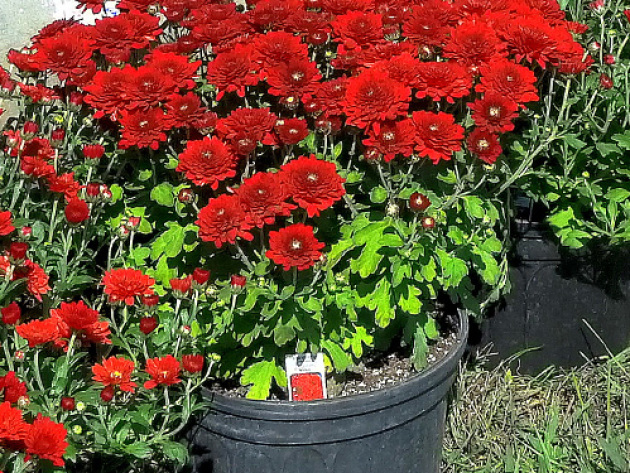
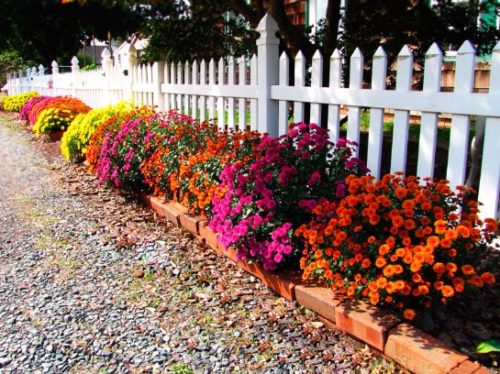
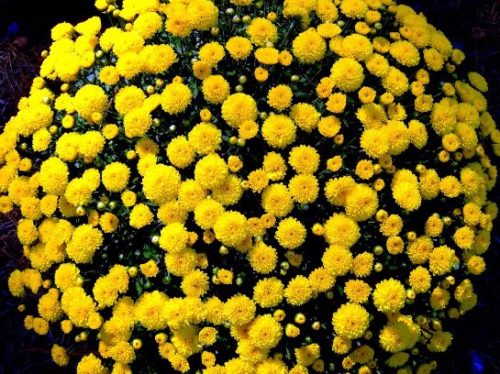
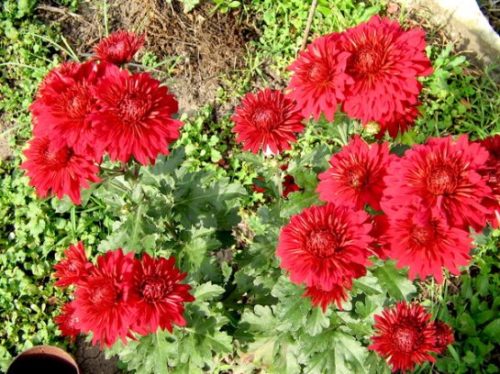
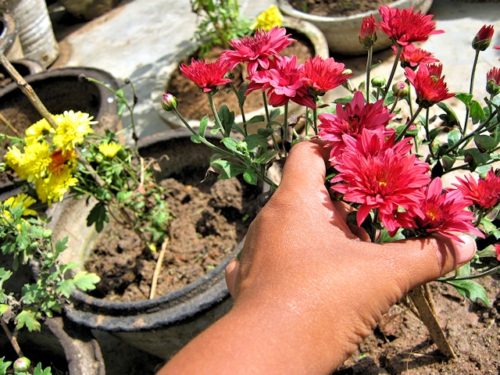
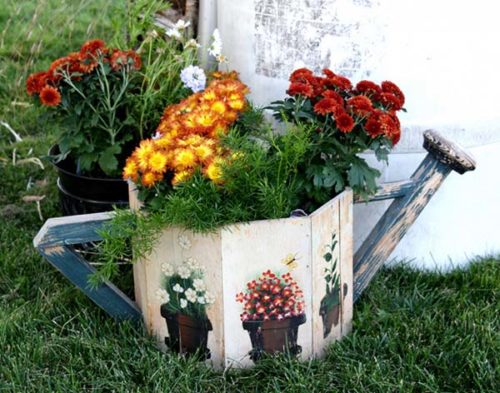
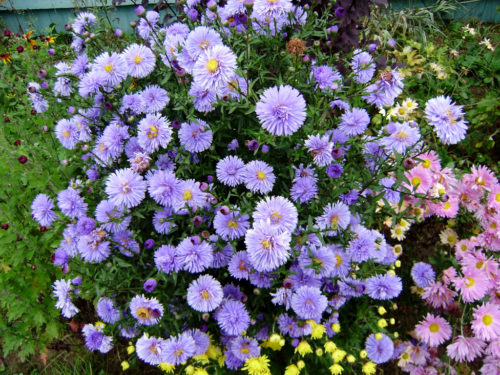
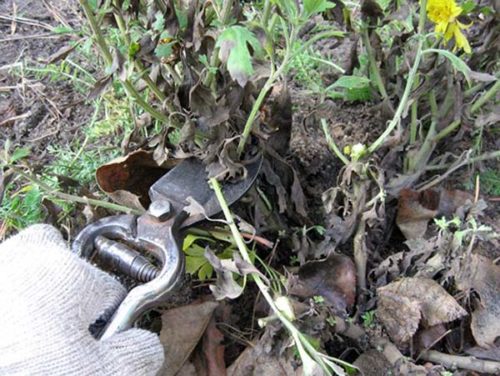
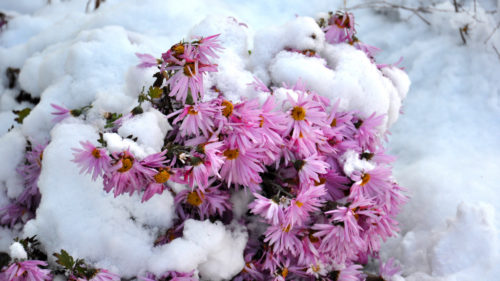
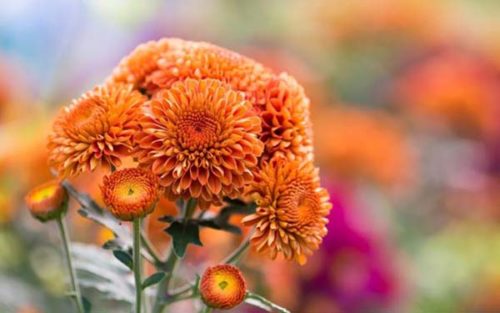
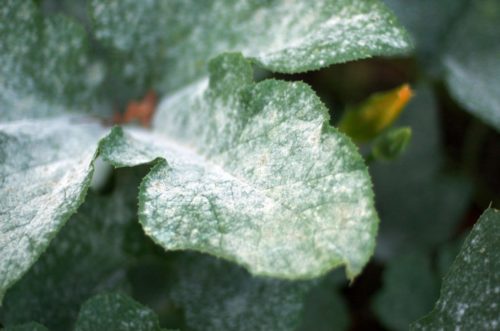
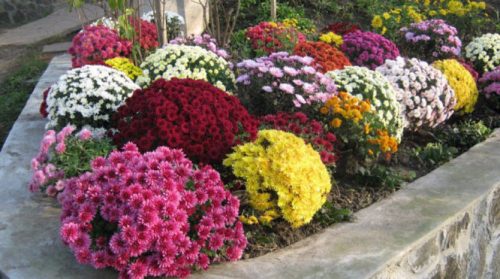
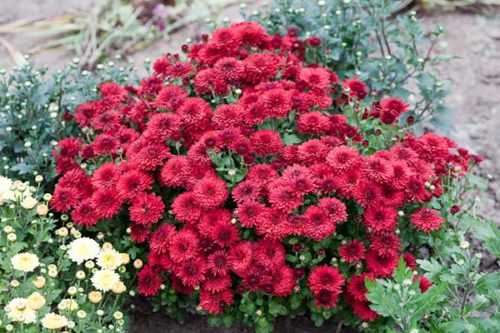
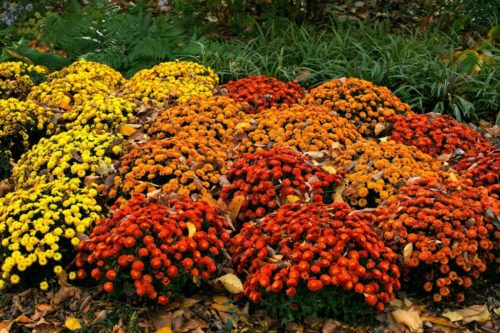
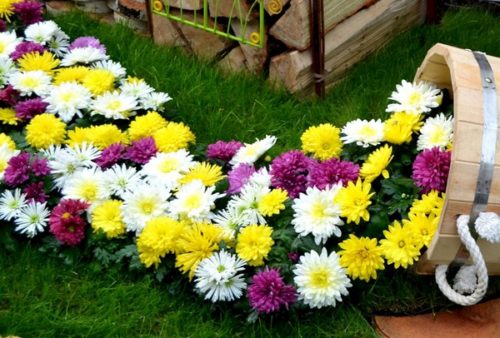












 Start a discussion ...
Start a discussion ...